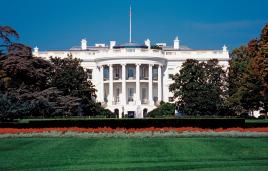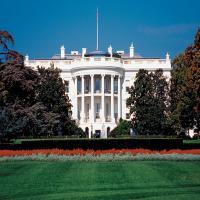Compliance Supplement Addresses COVID-19 Programs, FAC Transition

The Office of Management and Budget (OMB) on May 12 issued the 2022 Compliance Supplement (2 C.F.R. Part 200, Appendix XI), meeting an objective long requested by the audit community to publish the supplement earlier in the year to provide more timely instruction for auditor testing. Among the updates within the 1,968-page supplement includes a range of guidance covering single audits of COVID-19 programs, the inclusion of more programs requiring a review of grant performance, and a discussion about the planned Federal Audit Clearinghouse (FAC) transition in fall 2022 from the Department of Commerce Census Bureau to the General Services Administration (GSA) (see ¶650 in the Single Audit Information Service Module).
Each year, OMB issues the Compliance Supplement for auditors to follow in determining the compliance requirements that could have a direct and material effect on the programs included in a single audit. The supplement identifies compliance information to help auditors understand each program’s objectives, procedures and requirements, and provides audit objectives and suggested audit procedures for determining a federal recipient’s single audit compliance. The 2022 supplement replaces the 2021 version, its two associated addenda (released in December 2021 and January 2022) and a technical update to the 2021 supplement issued in April 2022 (see ¶1171 in the Single Audit Information Service Module). It applies to audits of fiscal years beginning after June 30, 2021.
Appendix VII Topics
Appendix VII, Other Audit Advisories, within the 2022 supplement provides audit information on numerous issues related to COVID-19 programs, which includes funding provided through the Coronavirus Aid, Relief, and Economic Security Act (CARES Act) (Pub. L. 116-136); the Coronavirus Response and Relief Supplemental Appropriations Act (CRRSAA) (Pub. L. 116-260); the American Rescue Plan Act (ARP) (Pub. L. 117-2); and other emergency relief packages.
As in the 2021 supplement, OMB reiterates in the 2022 supplement that the COVID-19 pandemic has led many federal agencies to issue guidance (e.g., frequently asked questions, memos) outside of the normal regulatory process for new and existing programs receiving COVID-19 funding. Due to the evolving nature of the pandemic, agencies have often updated, changed or deleted their specific guidance over time. The discussion in Appendix VII notes that sections in Part 4, Agency Program Requirements, of the supplement for COVID-19 programs often refer auditors to agency guidance documents to obtain a better understanding of statutory and regulatory compliance requirements subject to audit.
Although auditors consider, when evaluating a nonfederal entity’s compliance, provisions of federal statutes, regulations and the terms and conditions of an award, the supplement notes that an auditor may determine whether the entity is in compliance with a specific compliance requirement based on consideration of applicable implementing guidance in effect at the time of the activity or transaction under consideration.
Appendix VII also discusses a new alternative audit approach for Department of the Treasury’s Coronavirus State and Local Fiscal Recovery Funds (SLFRF) recipients that would otherwise not have reached the uniform guidance $750,000 threshold in federal funds expended annually (§200.501(a)) to be required to undergo a single audit if not for the expenditures of SLFRF funds received. This approach was initially addressed in the April 2022 technical update to the 2021 Compliance Supplement (see “OMB Issues Update to 2021 Compliance Supplement”). Under this approach, which is discussed in more detail in Part 4 of the supplement (Assistance Listing No. 21.027), eligible SLFRF recipients are those whose total SLFRF award received from Treasury or from states as a nonentitlement unit of local government is at or below $10 million, and whose other federal award funds expended are less than $750,000 during its fiscal year.
The alternative approach enables eligible recipients to engage a practitioner to perform a “compliance examination” engagement in accordance with the Government Auditing Standards, which directs practitioners to conduct these engagements to comply with American Institute of Certified Public Accountants Statements on Standards for Attestation Engagements, AT-C section 315, Compliance Attestation. “This alternative is intended to reduce the burden of a full single audit or program-specific audit on eligible recipients and practitioners, as well as uphold Treasury’s responsibility to be good stewards of federal funds,” OMB states in the supplement.
FAC Move to GSA
Also discussed in Appendix VII is the planned transition of the FAC from the Census Bureau to GSA as part of an overall effort to add improved functionality through consistent data formats. The transition to GSA will include two phases: All fiscal year (FY) 2022 audits as of Oct. 1 will go to the GSA FAC; however, the current Census FAC will continue to accept late FY 2021 audits. For audits of FY 2023, all audits must be submitted through the GSA FAC. Users searching information on auditees will be able to use both systems until the GSA completes the transition in 2023, when the Census FAC will shut down.
Appendix VII notes that the uniform guidance states that single audits must be submitted within the earlier of 30 calendar days after receipt of the auditor’s report(s), or nine months after the end of the audit period (§200.512). If it is not possible to meet the 30-day requirement due to the timing of the opening of the GSA FAC for submissions, audits will not be considered late if they are submitted within nine months after the end of the audit period. For example, a March 31, 2022, fiscal year-end single audit that is issued on June 30, 2022, would technically be due to the FAC on July 30, 2022 (i.e., 30 calendar days after the auditee’s receipt of the auditor’s report). Because the GSA FAC will not be available for submissions until Oct. 1, 2022, if the single audit is submitted to the FAC by Dec. 31, 2022, it would be considered timely and have no impact on the auditee’s low-risk status.
Requirements in Parts 3 through 5
OMB in the 2019 supplement reduced the number of required compliance requirements that auditors must test under Part 3, Compliance Requirements, from a maximum of 12 to a maximum of six for the programs in the Part 2 matrix, with the exception of the Research and Development cluster, which was permitted to identify seven compliance requirements as subject to audit. The 2022 supplement maintains this reduced number of compliance requirements for auditors to test. Federal awarding agencies administering the programs in the supplement select which compliance requirements are most important for auditor testing for each major program award (see ¶360 in the Module and Service). The six-requirement mandate does not apply to programs not included in the supplement.
In addition, under Part 3L of this year’s supplement, OMB is calling for auditors to conduct a review for performance reporting for 63 programs, compared to 57 in the 2021 supplement. This review aims to ensure that recipients are complying with federal performance goal reporting requirements, OMB said. The 2022 supplement also retains a requirement from the 2021 supplement in which auditors also must review Federal Funding Accountability and Transparency Act subaward reporting requirements for all programs, as applicable.
Part 4, Agency Program Requirements, includes numerous updated website links to agency guidance and other substantial guidance changes within various programs, which can be found in the list of changes to the 2022 supplement in Appendix V.
In Part 5, Clusters of Programs, the Student Financial Aid cluster section under “Special Tests and Provisions” includes extensive new discussions, as well as suggested audit procedures, related to the return of funds when a recipient of Title IV grant or loan assistance withdraws from an institution during a payment period, or the enrollment period in which the recipient began attendance.
Other Updates
The 2022 supplement adds seven new programs, deletes 10 and provides updates, where necessary, on many others. Added programs are the Department of Housing and Urban Development’s (HUD) Lead-based Paint Capital Fund Program and Housing-Related Hazards Capital Fund (14.888); the Treasury Department’s Emergency Rental Assistance Program (21.023), Homeowner Assistance Fund Program 21.026) and Coronavirus Capital Projects Fund (21.029); the Federal Communication Commission’s Emergency Connectivity Fund Program (32.009); the Small Business Administration’s Shuttered Venue Operators Program (29.075); and the Department of Health and Human Services’ (HHS) Family Violence Prevention and Services Act (93.671).
Deleted or retired programs are the Department of Agriculture’s (USDA) Child Nutrition Discretionary Grants Limited Availability program (10.579) (which was also deleted from the Food and Nutrition Service Programs cluster); the Department of Labor’s (DOL) Local Veterans’ Employment Representative Program (17.804) (which was deleted from the Employment Services cluster); the Department of Transportation’s (DOT) Alcohol Impaired Driving Countermeasures Incentive Grants I program (20.601), Occupant Protection Incentive Grants (20.602), Safety Belt Performance Grants (20.609), State Traffic Safety Information System Improvements Grants (20.610), Incentive Grant Program to Increase Motorcyclist Safety (20.612) and Child Safety and Child Booster Seat Incentive Grants (20.613) (these six were deleted from the Highway Safety cluster); and HHS’ Tribal Work Grants-Native Employment Works Program (93.594). For the 2022 supplement, HUD opted to use archived guidance for the Housing Counseling Assistance Program (14.169), but will resubmit guidance for the 2023 supplement.
The Food and Nutrition Service Programs cluster added the USDA’s Fresh Fruit and Vegetable Program (10.582); and the Employment Services cluster added the DOL’s Jobs for Veterans State Grant program (17.801). In addition, the Foreign Food Aid Donation cluster was renamed the Food for Peace cluster, and a new FMCSA cluster was added, consisting of DOT’s Motor Carrier Safety Assistance Program (20.218) and High Priority Grant Program (20.237).
OMB in Appendix IV listed the following programs as “higher-risk” programs: the Medicaid cluster (93.775/93.777/93.778); Federal Transit cluster (20.500/20.507/20.525/20.526); Provider Relief Fund (93.498); Testing for the Uninsured (93.461); Airport Improvement Program (20.106); SLFRF (21.027); Emergency Rental Assistance (21.023); Emergency Connectivity Fund Program (32.009); National Railroad Passenger Corporation Grants (20.315); and the Education Stabilization Fund (84.425). Appendix IV provides auditor information about testing Type A and Type B major programs with a “higher-risk” status.
OMB is accepting stakeholder comments on the 2022 supplement, which must be submitted to Regulations.gov by July 11, and such comments will be addressed, if appropriate, in the 2023 Compliance Supplement. Submissions should include “2 CFR part 200 Subpart F — Audit Requirements, Appendix XI — Compliance Supplement — 2022” in the subject line.
For More Information
The 2022 Compliance Supplement is available at https://www.thompsongrants.com/sites/grants/files/advisory_files/2022-Compliance-Supplement_PDF_Rev_05.11.22.pdf.



